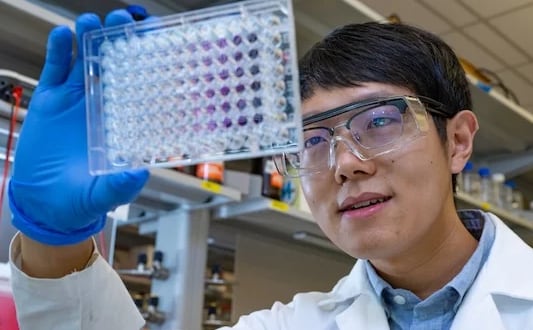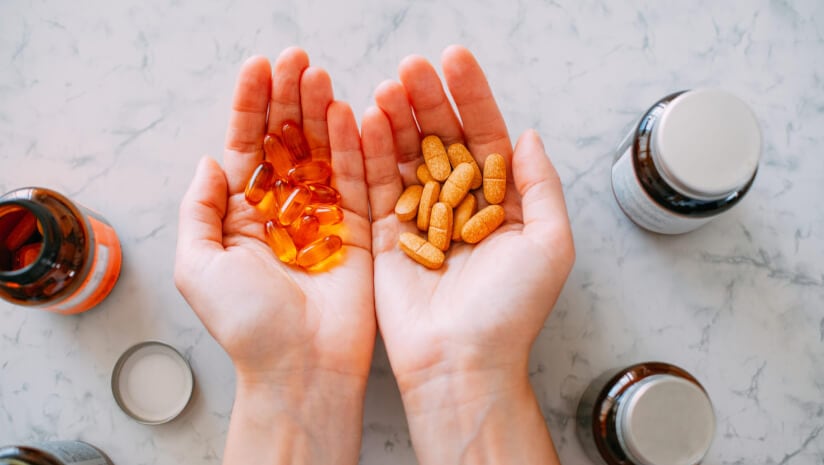The research, supported by Cancer Prevention and Research Institute of Texas (CPRIT) and the National Science Foundation, aimed to better understand the regulatory mechanism of vitamin K2 precursors in Lactococcus lactis (L. lactis) in order to make the bacteria produce vitamins in large quantities as a more sustainable and economical alternative to chemical synthesis or extraction from natural resources.
“Vitamin K2 is very important for blood clotting, bone health and cardiovascular health,” said Dr. Siliang Li, the first author of the study and a former graduate student who is now a postdoctoral fellow at Rice. “Some ‘good’ bacteria, like those found in cheese, natto and yogurt, make vitamin K2 during food fermentation. There is a desire to increase vitamin K2 production in these organisms.”
“However, making these bacteria produce more vitamins like K2 is challenging because bacteria don’t like to produce extra; they have evolved cellular mechanisms to limit the production to avoid toxicity buildup because of high concentrations,” Dr. Li added. “We wanted to understand the regulatory mechanism of vitamin K2 precursors in the food bacterium Lactococcus lactis so that we can develop strategies to boost vitamin K2 production.”
Method
The research team used a three-pronged approach that included biosensing, genetic engineering and mathematical modeling.
The biosensing approach involved building a custom biosensor in a different bacterium that was thousands of times more sensitive than conventional methods and required minimal lab equipment.
Genetic tools were used to alter the levels of enzymes in the biosynthetic pathway, and the researchers measured precursor output under different conditions.
The results from these experiments were then fed into a mathematical model of the pathway to understand the regulation of the precursor production.
Dr. Li told NutraIngredients that it is important to note the power of computation in discovering fundamental biological mechanisms.
“At first, our mathematical model and computational simulation did not match our lab data,” he said. “After adjusting the parameters on the computers, we quickly discovered a new regulatory mechanism in the vitamin K2 pathway. Computation-aided discovery and engineering, like we’ve demonstrated, would accelerate the R&D pipelines in the nutrition industry.”
Takeaways
The research, published in mBio, found that L. lactis maintains just enough vitamin K2 precursor levels– the perfect amount that helps cells grow but not so much that it becomes toxic.
“Even if we try to increase it by having the cell produce more enzymes in the biosynthesis pathway, the process hits a ceiling because the starting material runs low, just like trying to bake cookies with enough baking sheets but without enough flour,” Dr. Li said.
“Surprisingly, we also found that the order of genes on DNA matters—just rearranging them changed how much vitamin K2 precursor was made. Based on these findings, we suggested metabolic engineering strategies that could boost vitamin K2 precursor production several-fold."
By tuning substrate supply, enzyme expression and gene order simultaneously, the research team was able to push production above the natural ceiling.
Dr. Li told NI that these findings could offer major opportunities to manufacturers of the dietary supplements:
“Manufacturers can apply these findings to engineer L. lactis or other food bacteria with enhanced vitamin K2 production," he said.
“They can pay attention to removing the feedback inhibition in the biosynthesis pathway, tuning enzyme expression ratios, increasing substrate supplement and rearranging genes to bypass natural production caps of vitamin K2. These rational guides would accelerate the engineering process compared to trial-and-error approaches, which are typically tedious and time-consuming.”
‘Vitamin-producing microbes could transform nutrition and medicine’
Vitamins have traditionally been synthesized via chemical approaches or extracted from natural sources like plants. However, these approaches consume energy, are high-cost and not sustainable, Dr. Li said.
Making microbes to produce vitamins would be greener and cheaper because microbes can self-replicate and produce vitamins on a large scale with less energy consumption and the food-bacteria that produce vitamins can also be directly consumed through fermented food, he said, and these bacteria can continuously supply vitamins in the gut.
“It’s also more sustainable because there is no need for extraction or purification,” Dr. Li said.
Caroline Ajo‑Franklin, co-corresponding author of the study and Ralph and Looney Professor of Biosciences, director of the Rice Synthetic Biology Institute and a Cancer Prevention and CPRIT Scholar, added that vitamin-producing microbes could transform nutrition and medicine, but the scientific community must first decode their inherent checks and balances.
“Our work shows how L. lactis finely tunes its internal supply of the K2 precursor, allowing us to rewire it with precision," she said.
Source: mBio, doi: 10.1128/mbio.00887-25. “The growth benefits and toxicity of quinone biosynthesis are balanced by a dual regulatory mechanism and substrate limitations”. Authors: S. Li, et al.



